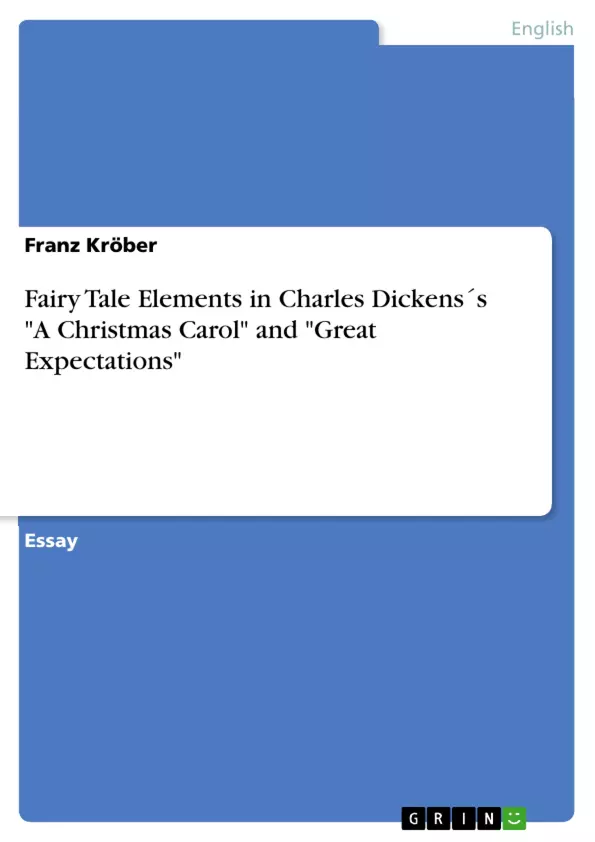Obwohl sich Charles Dickens zu Lebzeiten vehement gegen die Verfremdung von Märchen aussprach, enthalten seine eigenen Werke eine Vielzahl an Elementen aus jenem Genre. In "A Christmas Carol" dominieren diese Motive Elemente des Rationalen und machen die Erzählung somit zu einer Ghost Story, während Märchenelemente in "Great Expectations" in ihrer Funktion oder ihrer Erscheinung so verkehrt sind, dass sie den ironischen Fall des Protagonisten Pip vorrausdeuten. Nach einer kurzen Nennung der für dieses Essay wichtigen Merkmale von Märchen wird hier Dickens Verwendung von Märchenmotiven in "A Christmas Carol" und "Great Expectations" untersucht und verglichen.
Table of Contents
- Fairy Tale Elements in Charles Dickens's Great Expectations and A Christmas Carol
- The Fairy Tale
- A Christmas Carol
- Great Expectations
- Conclusion
Objectives and Key Themes
This article analyzes the usage of fairy tale elements in Charles Dickens's novels A Christmas Carol and Great Expectations. It explores how these elements are used to create an atmosphere of magic and wonder, while also serving to highlight the ironic failures of the protagonists' dreams.
- The use of fairy tale elements in Dickens's works
- The inversion of fairy tale motifs in Great Expectations
- The role of magical characters and settings in both novels
- The contrast between realistic and fantastical elements
- The impact of fairy tale elements on the reader's experience
Chapter Summaries
This section examines the chapter summaries and explores the main themes, arguments, or narrative elements of each chapter, without revealing any major conclusions or spoilers.
The Fairy Tale
This chapter discusses the characteristics of fairy tales, including their oral tradition, the "threshold crossing" of the hero, and the acceptance of magical elements as reality. It highlights the contrast between the ordinary and the extraordinary in fairy tales and how magical elements are considered commonplace and subject to rules.
A Christmas Carol
This chapter explores the use of fairy tale elements in A Christmas Carol. It analyzes the juxtaposition of realism and fantasy, with Scrooge's utilitarian worldview clashing with the magical elements that transform him. The chapter also examines the narrator's role in establishing a suspicious reader and how the narrative voice creates a sense of shared participation between storyteller and listener. The chapter concludes with a discussion of how the fairy tale machinery allows Dickens to juxtapose, contrast, and comment on characters and events.
Great Expectations
This chapter examines the inversion of fairy tale elements in Great Expectations. It analyzes Satis House as a realm of the marvelous that represents misfortune rather than fortune for the protagonist. It explores how the house, with its magical owner, Miss Havisham, and its timeless atmosphere, serves as a catalyst for Pip's journey and a source of his disillusionment. The chapter explores Miss Havisham's ambiguous character, portraying her as both a princess and a witch, and her connection to the Snow Queen and Rapunzel figures in fairy tales.
Keywords
The primary terms and concepts explored in this text include fairy tale elements, magical realism, threshold crossing, inversion of motifs, Victorian society, utilitarianism, irrationality, compassion, realism, fantasy, character development, reader engagement, and the power of narrative.
- Citation du texte
- Franz Kröber (Auteur), 2011, Fairy Tale Elements in Charles Dickens´s "A Christmas Carol" and "Great Expectations" , Munich, GRIN Verlag, https://www.grin.com/document/189371



